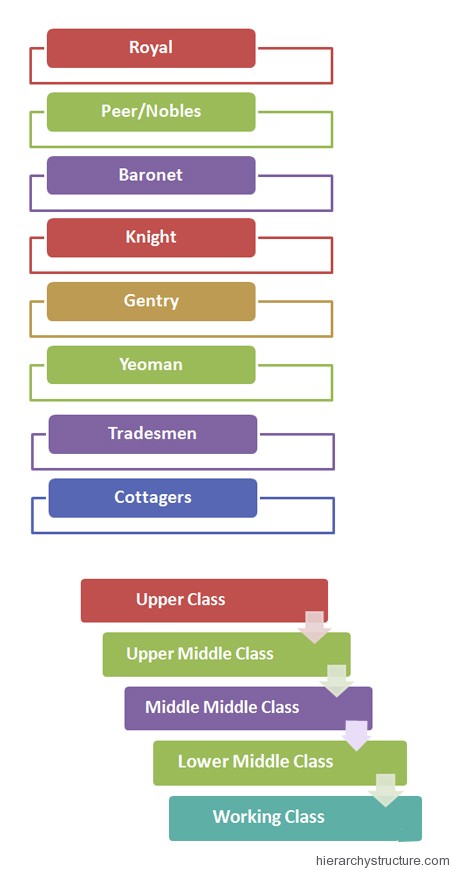The social structure of Britain has been highly influenced by the concept of classes. The class system is prevalent in the society of the United Kingdom in the 21st century too. The different classes were formed depending on various factors such as education levels, income and the type of occupation.
As per the norms of the Parliament of the United Kingdom, there were basically two social classes. One was called as the House of Lords, comprising of the hereditary upper class and another one was the House of Commons, representing everyone else in the British social hierarchy.
In this particular journal, we will first discuss the social system of former Britain and then the social system that is prevalent today in modern Britain.

The hierarchy that was prevalent at the time of formation of Great Britain is as follows:
- Royal
- Peer or Nobles
- Baronet
- Knight
- Gentry
- Yeomen
- Tradesmen
- Cottagers
Royal: This class belonged to the royal family and was the highest rank. The members were king, queen, prince, princess and close relatives of the royal family.
Peer/Nobles: They belonged to the House of Lords and played a vital role in court. They owned a large number of assets.
Baronet: This rank was above the knights. These were also among the aristocratic people in the scoeity who enjoyed a large number of social privileges.
Knight: The job roles of the knights were different depending upon the varying time periods of the past. During the medieval times, the knights acted as common soldiers. In the seventeenth century, the knights acted in various military roles. They organized the military forces and judicial authorities.
Gentry: The members of this class were well educated and were associated with law, politics ad educational fields. These used to work in government and educational institutions.
Yeoman: This class included small farmers, who had a reasonable amount of land with them.
Tradesmen: These individuals had little land with them.
Cottagers: These were the lowest classes in the former British social hierarchy. They generally worked for others for a substantial amount of wage.
Now, coming into the 21st century, here are the social classes that are prevalent today.
- Upper class
- Upper middle class
- Middle middle class
- Lower middle class
- Working class
Upper class
The upper class consists of peerage, gentry and hereditary landowners.
Upper middle class
This particular class consists of people with higher education and income levels. In some cases, the individuals of the upper middle classes have their ancestors belonging to the upper classes. The individuals of the upper middle classes get their education at the prestigious private schools and public schools.
Middle middle class
The individuals of this class are associated with the jobs as social workers, IT workers, engineers, bankers, teachers, architects etc. They are actively engaged in the political and social works.
Lower middle class
The lower class is comprised of the white collar workers. They are employed in the less skilled services in comparison to the upper middle classes.
Working class
This is the lowest class of the British social hierarchy. They are not being able to take optimum education and are associated with unskilled professions.
